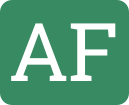About

I made this blog to talk about things that I come across related to machine learning, statistics and/or programming that I find interesting or that I think may be useful to other people. To tell you a little about myself, I enjoy programming, data science and exploring the outdoors. In terms of Programming, I largely work in Python, but have some experience in R as well.
I graduated from Wabash College, a small liberal arts school in rural Indiana, with a degree in Psychology. While attending Wabash, I found my passion for neuroscience and began pursuing a career in this field. For my senior capstone project I ran an extensive study under the guidance of my supervisor testing the effects of testosterone and estradiol in the right orbital frontal cortex on impulsivity.
After graduating, while searching for a lab technician job in a neuroscience lab, I worked a brief stint at Zope Corp., a Python shop that at the time was developing a parent-teacher communication app called Zebra Reacht. I was brought on as an intern to keep their user analytics dashboard up to date with information that the marketing and product management team requested, as well as managing MixPanel events. I really enjoyed my work there, but was still set on a career in neuroscience, so when I got a job offer for a lab at SUNY Binghamton, I took the position.
While working as a research technician at SUNY Binghamton, I worked in a lab studying the effects of thiamine deficiency, alcoholism and exercise on acetylecholine modulation in areas of the brain related to learning and memory such as the hippocampus, prefrontal cortex, and medial septum. Although I worked with all of the lab members on different studies, I was also individually tasked with a long-term study trying to determine differential BDNF release in the hippocampus during a behavioral task 24 hours or 2 weeks after voluntary exercise following thiamine deficiency treatment. To undertake this study, I had to develop a novel method for extracting BDNF from a living brain during behavioral testing, something that had never been previously achieved, and also had to modify a protein assay kit to account for the low volumes of samples I could get. During this time, I kept up with programming, automating data collection, transformation, and analysis using a number of python tools and R. I also built a task manager for my experiment that updated me on what I needed to do each day for my experiment. I also built a GUI to score excel files of raw data for Spontaneous Alternation, a behavioral task testing working memory. During this time, although I really enjoyed the lab work, I realized that my passion was truly in programming for data analysis, and decided to pursue a career where I could work full time doing this, so I left the lab to join Galvanize’s Data Science Bootcamp to further my programming and statistical abilities.
At Galvanize, I learned a great deal more about machine learning from some very talented instructors. I also got some really cool opportunities to work with industry data sets. For instance I built a fraud detection model with EventBrite data, a churn prediction model with data from a ride sharing business, and a recommendation system with data from MovieLens. My time at Galvanize culminated in a two week capstone project, where I built an image classification system with a convolutional neural net from roughly 400000 images I scraped from the internet for Dobot, Inc., a small startup that has made an app to help people better manage their savings.
